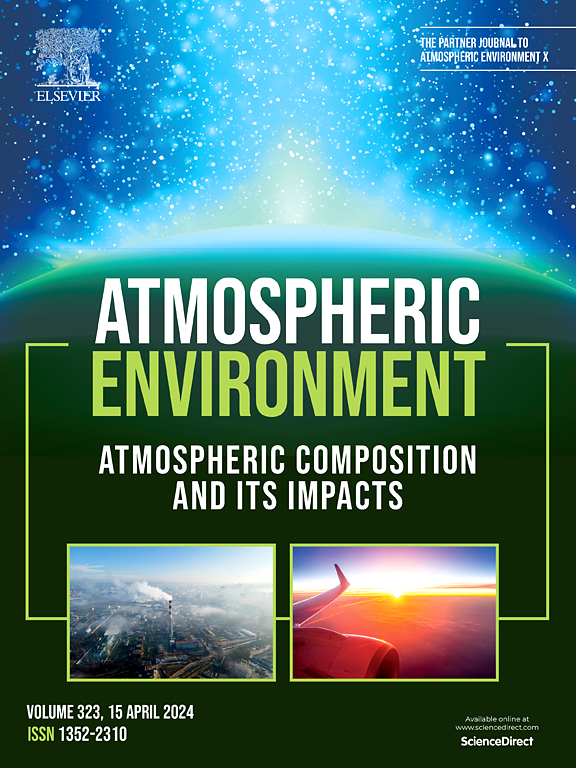Source attribution of near-surface ozone pollution in Jiangsu Province of China over 2013–2019
IF 4.2
2区 环境科学与生态学
Q2 ENVIRONMENTAL SCIENCES
引用次数: 0
Abstract
Near-surface ozone (O3) is one of the most severe air pollutants in China, particularly over densely populated Jiangsu Province in the Yangtze River Delta. In this study, an O3 source tagging technique is utilized in a chemistry-climate model to quantify the source contributions of various emission sectors and regions for nitrogen oxides (NOx) and volatile organic compounds (VOCs) to O3 concentrations in Jiangsu Province during 2013–2019. The results show that the near-surface O3 in Jiangsu Province is mainly contributed by surrounding and remote anthropogenic NOx emissions through long-range transport. Local anthropogenic NOx emissions account for only 13 % and 18 % of the annual and summertime mean near-surface O3 in Jiangsu Province, respectively. Anthropogenic NOx emissions from the surface transportation, industry, and energy sectors account for 21 %, 22 % and 20 % of the annual mean near-surface O3 concentration in Jiangsu Province, respectively. Biogenic and anthropogenic VOCs emissions each explains one-third of the annual mean near-surface O3 concentration in Jiangsu, while methane and stratospheric chemical production contribute 21 % and 6 %, respectively. The sources from stratospheric production, aircraft, lightning, and foreign emissions are the primary contributors to O3 in the mid- and high troposphere. During high pollution days in Jiangsu Province, the near-surface O3 concentrations increase with the maximum exceeding 20 ppb, which is attributed to both the enhanced photochemical production and regional transport in favorable meteorological conditions.
2013-2019年江苏省近地表臭氧污染源归属分析
近地表臭氧(O3)是中国最严重的空气污染物之一,特别是在人口稠密的长江三角洲江苏省。本研究利用化学-气候模型中的O3源标记技术,量化了2013-2019年江苏省不同排放部门和地区对O3浓度的氮氧化物和挥发性有机物的源贡献。结果表明:江苏省近地表O3主要由周边和远处人为NOx排放远距离输送贡献;当地人为NOx排放量仅占江苏省近地表O3年和夏季平均排放量的13%和18%。江苏省地面交通、工业和能源部门的人为NOx排放分别占近地表O3年平均浓度的21%、22%和20%。生物源和人为VOCs排放分别占江苏近地表O3年平均浓度的三分之一,而甲烷和平流层化学生产分别占21%和6%。来自平流层生产、飞机、闪电和外来排放的来源是对流层中高层O3的主要贡献者。江苏省高污染日近地表O3浓度增加,最大超过20 ppb,这与气象条件下光化学生产和区域运输的增强有关。
本文章由计算机程序翻译,如有差异,请以英文原文为准。
求助全文
约1分钟内获得全文
求助全文
来源期刊

Atmospheric Environment
环境科学-环境科学
CiteScore
9.40
自引率
8.00%
发文量
458
审稿时长
53 days
期刊介绍:
Atmospheric Environment has an open access mirror journal Atmospheric Environment: X, sharing the same aims and scope, editorial team, submission system and rigorous peer review.
Atmospheric Environment is the international journal for scientists in different disciplines related to atmospheric composition and its impacts. The journal publishes scientific articles with atmospheric relevance of emissions and depositions of gaseous and particulate compounds, chemical processes and physical effects in the atmosphere, as well as impacts of the changing atmospheric composition on human health, air quality, climate change, and ecosystems.
 求助内容:
求助内容: 应助结果提醒方式:
应助结果提醒方式:


